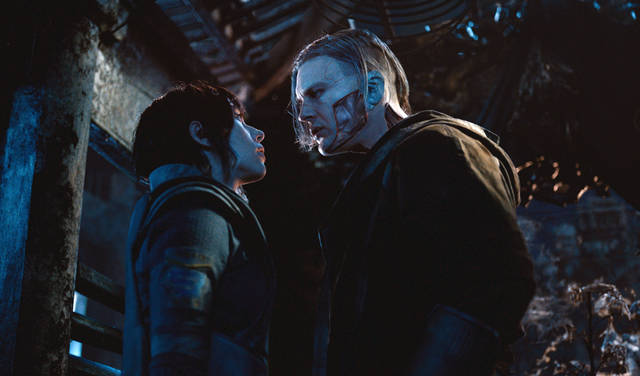It’s amazing that a live action “Ghost in the Shell” movie was made considering that a large part of its target audience would always react to its mere existence as if it were an act of war.
Of course, some of their complaints were valid. “Ghost in the Shell” should have starred an Asian actress in the Scarlett Johansson role. If they were looking for someone with marquee value to throw on the poster, they could have cast a ‘name’ like Jack Nicholson or Samuel L. Jackson to play a supporting role as a retired U.S. Army colonel or a slimy industrialist or whatever.
But for every valid criticism, there were far too many that epitomized the kind of finicky axe-grinding that occurs whenever some nerdy, fetish-object is adapted for the big screen. In this case the nerdy, fetish object turned out to be the not-nearly-as-great-as-you-remember-it-being manga/anime “Ghost in the Shell”; simultaneously a Japanese comic that owed a very heavy debt to author Phillip K. Dick and an animated movie whose greatest claim to fame was inspiring future, cinematic laughingstock “The Matrix”.
Let that sink in for a moment. Bragging that “The Matrix” ripped off your sci-fi concept is like claiming that Fred Durst totally copped your rock persona. At best, nobody cares. At worst, we now know who to blame. Nonetheless, a film like “Ghost in the Shell” was destined to fail mainly because those who would appreciate it the most were unwilling to give it a chance.
And as flawed as this movie can be, it definitely deserves a chance.
In a part that more than likely should have been played by Chiaki Kuriyama in a movie that should have existed ten years ago, Johansson essays the role of Major, a cyborg with a human brain or, as the film clumsily reminds us over and over again, a ghost in the shell.
Although not quite suicidal, Major doesn’t seem particularly comfortable to be alive. The only time she seems somewhat at ease is whenever she’s hunting down criminals which isn’t that strange considering it’s the job she was engineered to do.
But a recent spate of terrorist attacks against scientists at Hanka, the corporate conglomerate that created her, has placed Major in an awkward position. Loyal to her perceived family at Hanka, Major has mixed feelings for the mastermind behind the attacks who taunts Major with details about her own past she may or may not have actually experienced.
As noted above, “Ghost in the Shell” is flawed. The dialogue is clunky, the whodunit plotline hokey (no surprise there. The screenplay was apparently punched-up by noted hack Ehren Kruger), and the international casting is nonsensical especially in any scene where Johansson and “Beat” Takeshi Kitano carry on a conversation with each other.
Meanwhile the points the film attempts to make about identity and reality are warmed over clichés (which, to be fair, was true of earlier versions of “Ghost in the Shell” as well). Oddly, what resonates in the film are the throwaway details such as the fact that people are mostly wasting technology on frivolous pursuits (such as the guy who replaced his liver with a cyber-liver just so he could get drunk more).
Even more amazing, the whitewashing in the film could be read as a sly commentary on itself when Major’s identity is revealed (Of course, some might read it as nothing more than a patronizing consolation prize and that would also be a fair assessment).
But what really makes “Ghost in the Shell” worth checking out at least once is Jess Hall’s beautiful cinematography which paints a scummy but lyrical portrait of a future Japan. Hall gives you a glimpse of a frightening but alluring new world filled with robotic geishas; giant holographic billboards, whose single purpose is to loudly remind us it’s the future; and black market body modification shops hidden within the filthy basements of strip clubs.
Sure, you could argue that “Ghost in the Shell” is short on substance and big on glossy, distant surface details and you would be right. But I would counter by noting that you could just as easily not only describe the original versions of “Ghost in the Shell” in that way but Ridley Scott’s “Blade Runner” as well. Sometimes there’s no shame in just looking good.





